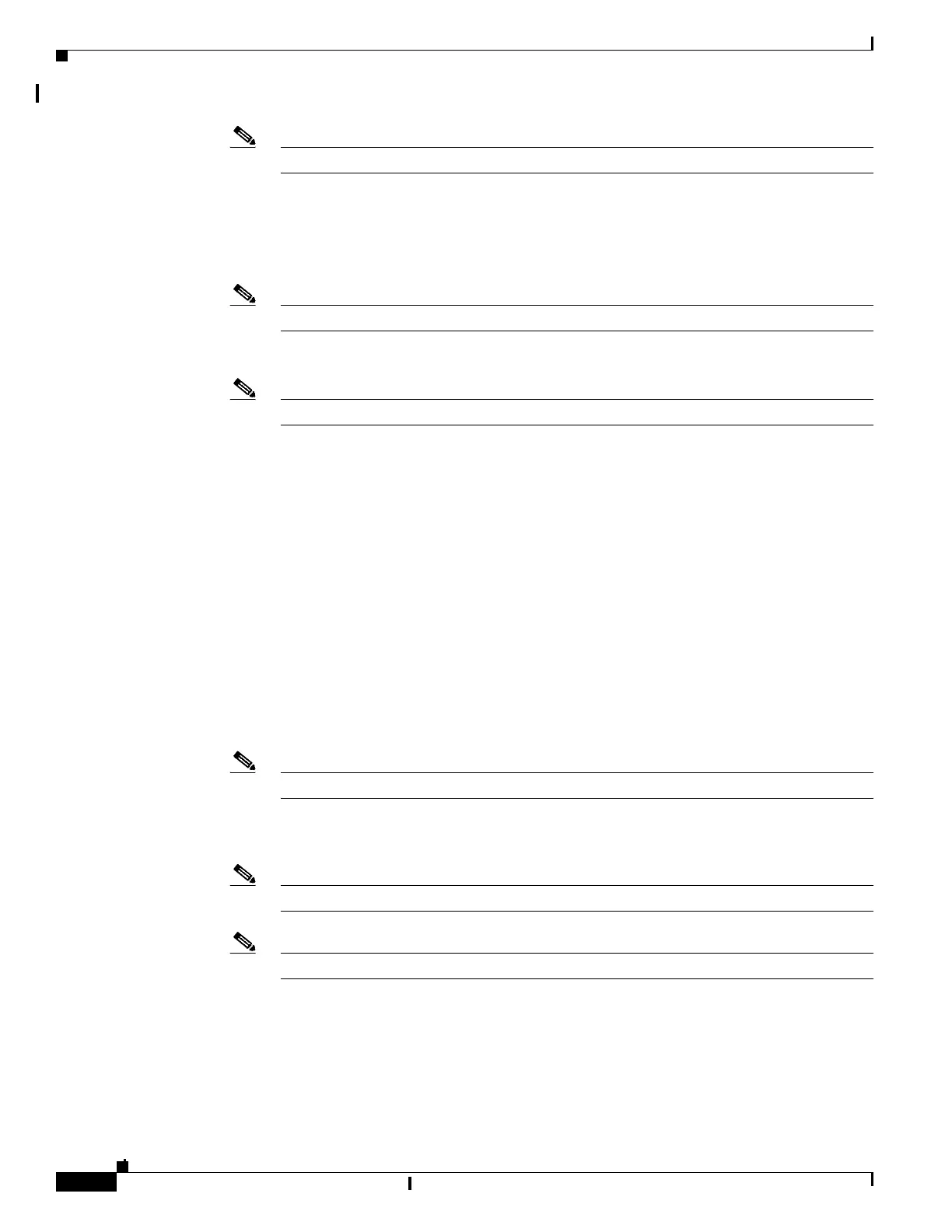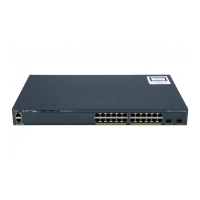1-14
Catalyst 2960 and 2960-S Switches Software Configuration Guide, Release 15.0(1)SE
OL-26520-01
Chapter 1 Overview
Features
Note To use flow-based packet classification, the switch must be running the LAN Base image.
–
Trusted port states (CoS, DSCP, and IP precedence) within a QoS domain and with a port
bordering another QoS domain
–
Trusted boundary for detecting the presence of a Cisco IP Phone, trusting the CoS value
received, and ensuring port security
Note To use trusted boundary, the switch must be running the LAN Base image.
• Policing
Note To use policy maps, the switch must be running the LAN Base image
–
Traffic-policing policies on the switch port for managing how much of the port bandwidth
should be allocated to a specific traffic flow
–
If you configure multiple class maps for a hierarchical policy map, each class map can be
associated with its own port-level (second-level) policy map. Each second-level policy map can
have a different policer.
–
Aggregate policing for policing traffic flows in aggregate to restrict specific applications or
traffic flows to metered, predefined rates
• Out-of-Profile
–
Out-of-profile markdown for packets that exceed bandwidth utilization limits
• Ingress queueing and scheduling
–
Two configurable ingress queues for user traffic (one queue can be the priority queue)
–
Weighted tail drop (WTD) as the congestion-avoidance mechanism for managing the queue
lengths and providing drop precedences for different traffic classifications
Note To use WTD, the switch must be running the LAN Base image.
–
Shaped round robin (SRR) as the scheduling service for specifying the rate at which packets are
sent to the stack ring (sharing is the only supported mode on ingress queues)
Note To use ingress queueing, the Catalyst 2960 switch must be running the LAN Base image.
Note Ingress queueing is not supported on Catalyst 2960-S switches.
• Egress queues and scheduling
–
Four egress queues per port
–
WTD as the congestion-avoidance mechanism for managing the queue lengths and providing
drop precedences for different traffic classifications

